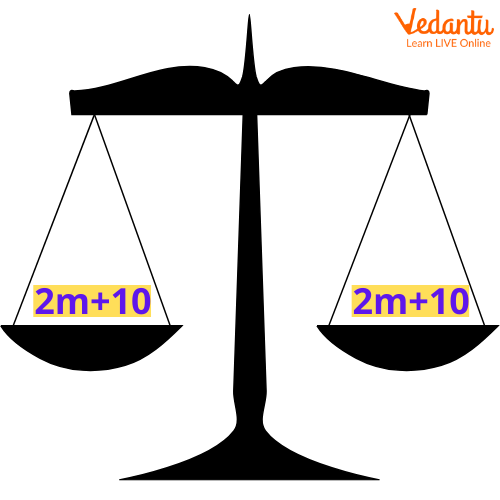




How the Property of Equality Simplifies Solving Equations
In Mathematics, two things are equal if and only if they are exactly similar in every way i.e. they have the same Mathematical value and Mathematical properties. Mathematics uses the equality sign (=) to represent equality. For example, the statement A = B implies that A and B are equal.
What is the Property of Equality?
Property of equality is the fact or truth that is applied to two or more quantities related by an equal sign. Let us learn different properties of equality with examples.

Addition Property of Equality
The Addition property of equality states that when the same number is added from both sides of the equation, the equation still holds true. In other words, it states that if,
X = Y,
then X + Z = Y + Z
Example:
We know that, 4 + 3 = 7
Here, if we add 5 to both sides of the equation, the equation still holds true.
i.e. 4 + 3 + 5 = 7 + 5
12 = 12
LHS = RHS
Subtraction Property of Equality
The subtraction property of equality states that when the same number is subtracted from both sides of the equation, the equation still holds. In other words it states that if,
X = Y, then X - Z = Y - Z
Example:
We know that, 9 - 3 = 6
Here, if we subtract 2 to both sides of the equation, the equation still holds
9 - 3 - 2 = 6 - 2
4 = 4
LHS = RHS
Multiplication Property of Equality
The multiplication property of equality states that when both sides of an equation are multiplied by the same number, the two sides remain equal.
In other words, it states that if x, y, and z are real numbers such that x = y, then
a x c = b x c .
Example, If a = 10, b = 10, and c = 12, then
a x c = b x c
10 x 12 = 10 x 12
120 = 120
Therefore, LHS = RHS
Division Property of Equality
The division property of equality states that when both sides of an equation are divided by the same non-zero number, two sides remain equal. In other words, it states that if a = b, and c ≠ 0, then a ÷ c = b ÷ c
Example:
If a = 10, b = 10, and c = 5, then
a ÷ c = b ÷ c
10 ÷ 5 = 10 ÷ 5
2 = 2
Therefore, LHS = RHS
Symmetric Property of Equality
The symmetric property of equality states that if we interchange the sides of an equation, the equation still holds. In other words, it states that if X = Y, then Y = X.
Example: If 3 + 5 = 8, then 8 =?
3 + 5 = 8 or
8 = 5 + 3
Reflexive Property of Equality
The reflexive property of equality states that a number is always equal to itself. In other words, it states that if x is a number, then x = x.
Example:
2 = 2
Transitive Property of Equality
The transitive property of equality states that when given 3 numbers a, b, and c then,
a = b, b= c, then a = c.
Example:
If a = b, and b = 3, then c is also equal to 3 according to the transitive property of equality.
Substitution Property of Equality
The substitution property of equality states that if two quantities are equal, then one can replace the other in any Mathematical equation or expression.
In other words, it states that if a = b, then b can be substituted for a, in any Mathematical expression.
Example:
If a = 2 and a + 3 = 5, then 2 can be substituted in a + 3 = 5 to get 2 + 3 = 5.
Conclusion
In short, the property of equality is the truth about any quantity that is related by an equal sign. By understanding the property of equality thoroughly, we are able to simplify, manipulate, balance, and solve Mathematical equations easily. Also, we are able to draw conclusions supported by valid reasons.
FAQs on Property of Equality: Definition, Rules & Examples
1. What does the equal sign (=) represent in the property of equality?
The equal sign (=) in the property of equality states the equivalence relation between both the quantities. In other words, it states what is there on the left side of the equation is equal to the right side of an equation.
2. What does the equation mean in the property of equality?
Equations are Mathematical statements that combine two expressions of equal value. We solve the algebraic equation by isolating the variables on the side of the equation using the precise property of equality. To check the solution for algebraic equations, substitute the value into an original equation.

















